Artech 1.6 at 10 psi
#101
Now . . . here is something else that is interesting about this exercise.
Curly's first efforts were directed to the piping immediately around the turbo, i.e., the manifold and the downpipe. Changing these by themselves did not have the expected power gain because of the restriction downstream (to be confirmed).
Turbine pressure ratio multiplication effect is the big deal here. Based upon that, it would appear that the most cost effective exhaust mods should focus on the exhaust from the downpipe on ("after the turbine"). The design of the exhaust manifold itself doesn't have much of an effect because it is not subject to the turbine "multiplier." I suspect all those springing for big, fancy tubular exhaust manifolds are mostly wasting their money, dealing with packaging issues and increasing engine compartment heat. It is not the same thing as exhaust headers on a NA engine . . . there is no scavenging effect when you've plugged up the exhaust with a turbine wheel.
So, sub'd for confirmation (actually, Brain's incredible results are already pretty clear I think).
Curly's first efforts were directed to the piping immediately around the turbo, i.e., the manifold and the downpipe. Changing these by themselves did not have the expected power gain because of the restriction downstream (to be confirmed).
Turbine pressure ratio multiplication effect is the big deal here. Based upon that, it would appear that the most cost effective exhaust mods should focus on the exhaust from the downpipe on ("after the turbine"). The design of the exhaust manifold itself doesn't have much of an effect because it is not subject to the turbine "multiplier." I suspect all those springing for big, fancy tubular exhaust manifolds are mostly wasting their money, dealing with packaging issues and increasing engine compartment heat. It is not the same thing as exhaust headers on a NA engine . . . there is no scavenging effect when you've plugged up the exhaust with a turbine wheel.
So, sub'd for confirmation (actually, Brain's incredible results are already pretty clear I think).
#102
Joined: Jun 2006
Posts: 29,085
Total Cats: 375
From: Republic of Dallas
Now . . . here is something else that is interesting about this exercise.
Curly's first efforts were directed to the piping immediately around the turbo, i.e., the manifold and the downpipe. Changing these by themselves did not have the expected power gain because of the restriction downstream (to be confirmed).
Turbine pressure ratio multiplication effect is the big deal here. Based upon that, it would appear that the most cost effective exhaust mods should focus on the exhaust from the downpipe on ("after the turbine"). The design of the exhaust manifold itself doesn't have much of an effect because it is not subject to the turbine "multiplier." I suspect all those springing for big, fancy tubular exhaust manifolds are mostly wasting their money, dealing with packaging issues and increasing engine compartment heat. It is not the same thing as exhaust headers on a NA engine . . . there is no scavenging effect when you've plugged up the exhaust with a turbine wheel.
So, sub'd for confirmation (actually, Brain's incredible results are already pretty clear I think).
Curly's first efforts were directed to the piping immediately around the turbo, i.e., the manifold and the downpipe. Changing these by themselves did not have the expected power gain because of the restriction downstream (to be confirmed).
Turbine pressure ratio multiplication effect is the big deal here. Based upon that, it would appear that the most cost effective exhaust mods should focus on the exhaust from the downpipe on ("after the turbine"). The design of the exhaust manifold itself doesn't have much of an effect because it is not subject to the turbine "multiplier." I suspect all those springing for big, fancy tubular exhaust manifolds are mostly wasting their money, dealing with packaging issues and increasing engine compartment heat. It is not the same thing as exhaust headers on a NA engine . . . there is no scavenging effect when you've plugged up the exhaust with a turbine wheel.
So, sub'd for confirmation (actually, Brain's incredible results are already pretty clear I think).
#103
Thread Starter
Joined: Oct 2005
Posts: 14,497
Total Cats: 1,236
From: Oregon City, OR
I think his point was with a log manifold and 2.5" dp, upgrading to 3" exhaust is a bigger bump in HP than a better manifold.
I'd have to agree, although you can't prove your point with this thread or brainy's dyno plots, as were both only changing exhaust. To see what a manifold design change does, you'd have to change that only.
I'd have to agree, although you can't prove your point with this thread or brainy's dyno plots, as were both only changing exhaust. To see what a manifold design change does, you'd have to change that only.
#104
He's got a point as far as delta-P is concerned. You want the lowest backpressure possible to have the highest pressure differential pre- and post-turbine. This is what generates the shaft work which drives the compressor side. Well, that and delta-T, and mass flow rate.
Better manifolds improve flow, much like porting your head. Improvements in power will depend on where your bottleneck is, and the rest of your setup. Already have big exhaust and bigger valves? Then of course a better mani is in order... Restrictive exhaust and otherwise average parts? Then your dollar is best spent on downpipe and exhaust...
Better manifolds improve flow, much like porting your head. Improvements in power will depend on where your bottleneck is, and the rest of your setup. Already have big exhaust and bigger valves? Then of course a better mani is in order... Restrictive exhaust and otherwise average parts? Then your dollar is best spent on downpipe and exhaust...
#106
I'm following this thread with great interest. I have a FM II on a 90 with the racing beat exhaust and FM's high flow cat. Had the car tune yesterday and had the same disappointment as you Curly. At 8psi I had 154hp and 123tq. So I'd like to see how much a difference the 3" exhaust makes.
#110
Thread Starter
Joined: Oct 2005
Posts: 14,497
Total Cats: 1,236
From: Oregon City, OR
Is it ok that it'll probably just be a 3rd gear virtual dyno result? I may get a 3rd gear run datalog on my current setup (same setup as I dyno'd with) just to compare to. I'll mess with the settings till my current setup matches the dyno's output, then use those settings with my 3" exhaust and see what happens.
#111
Is it ok that it'll probably just be a 3rd gear virtual dyno result? I may get a 3rd gear run datalog on my current setup (same setup as I dyno'd with) just to compare to. I'll mess with the settings till my current setup matches the dyno's output, then use those settings with my 3" exhaust and see what happens.
#113
I think it's more important to compare on like systems. That is, I wouldn't worry too much about whether the virtual dyno matched the physical unit but I would definitely make sure to have at least 3 virtual dyno runs (to verify some consistency) on the current setup and then run 3 more on the new setup - preferably with similar conditions on the same stretch of closed circuit/Mexico.
#114
It's also worthwhile to use the SAE corrections. Not for pressure, obviously (we're turboed, after all), but definitely for inlet temperatures. I'll typically SAE correct using the inlet temperature from the end of the run. Since there is lag in the temperature sensor, that ends up being ~ what the temperature was in the heart of it. If you don't do this, then heat soaking can give you large variations.
The other main variables are wind and slope. I had asked Brad if we could have an averaging function to help with that. Hasn't made it into the software yet.
3rd gear pull is fine. The only thing with using lower gears is that more torque is used to accelerate rotating mass than if you used a higher gear -- this leads to slightly lower readings -- no big deal. I normally use 3rd gear for obvious reasons.
The other main variables are wind and slope. I had asked Brad if we could have an averaging function to help with that. Hasn't made it into the software yet.
3rd gear pull is fine. The only thing with using lower gears is that more torque is used to accelerate rotating mass than if you used a higher gear -- this leads to slightly lower readings -- no big deal. I normally use 3rd gear for obvious reasons.
#115
Thread Starter
Joined: Oct 2005
Posts: 14,497
Total Cats: 1,236
From: Oregon City, OR
Wham:
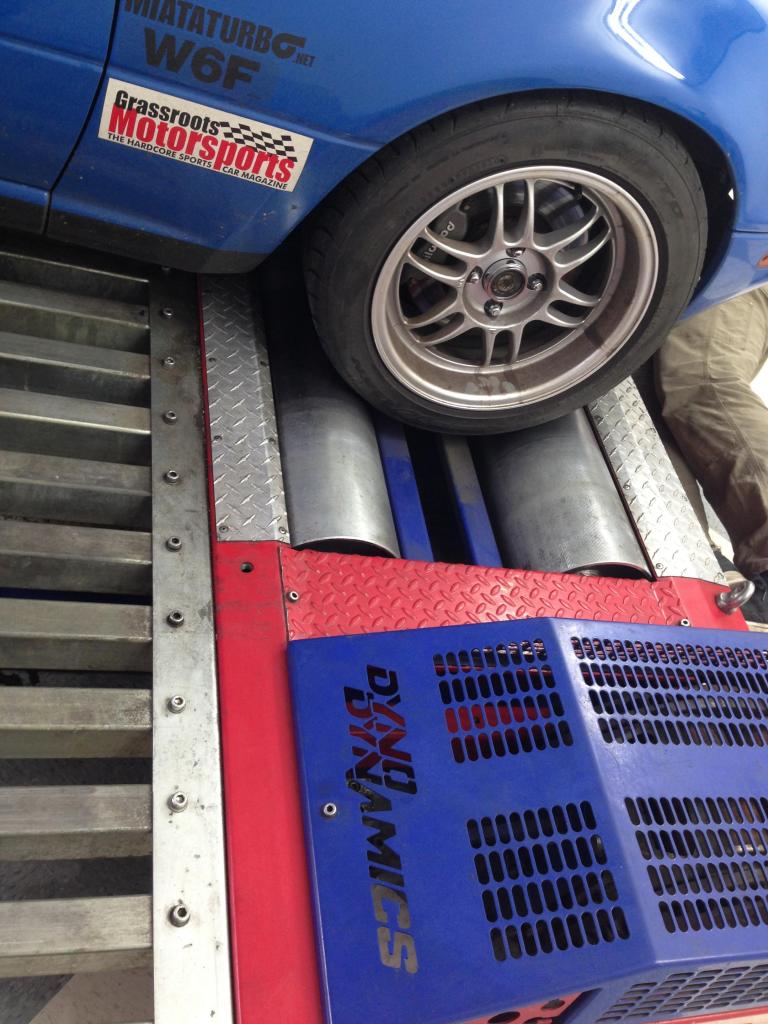
Bam:
Thank ya ma'am:
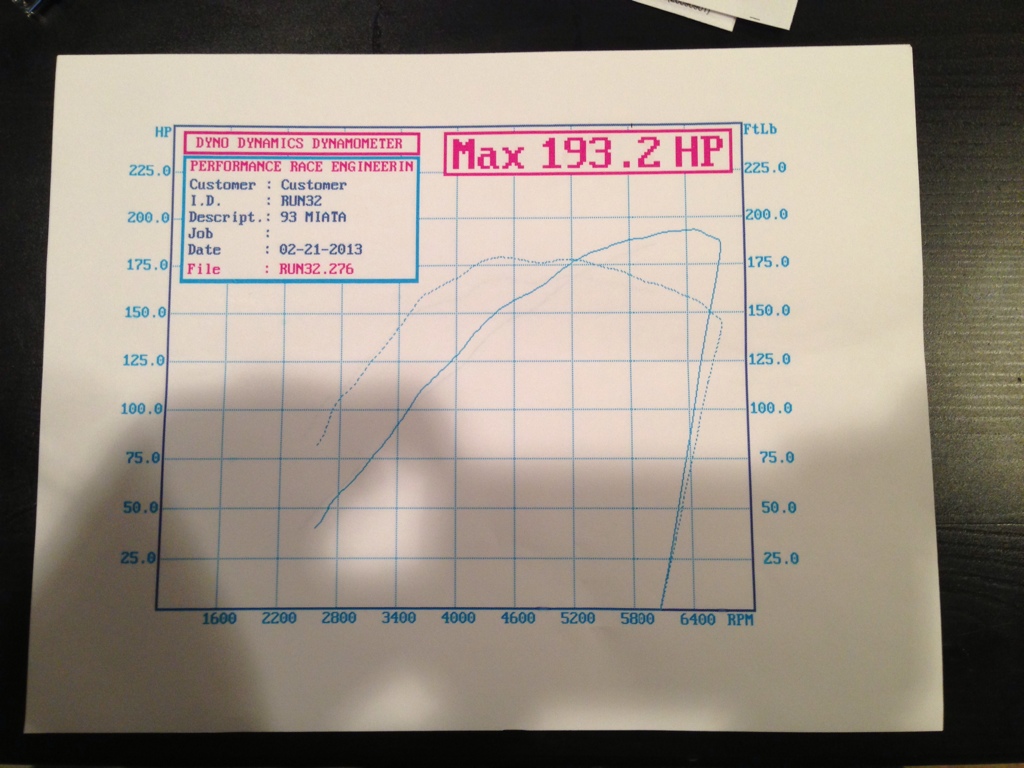
Made 185 on 10 psi, all the following graphs are for the 3 185hp runs:
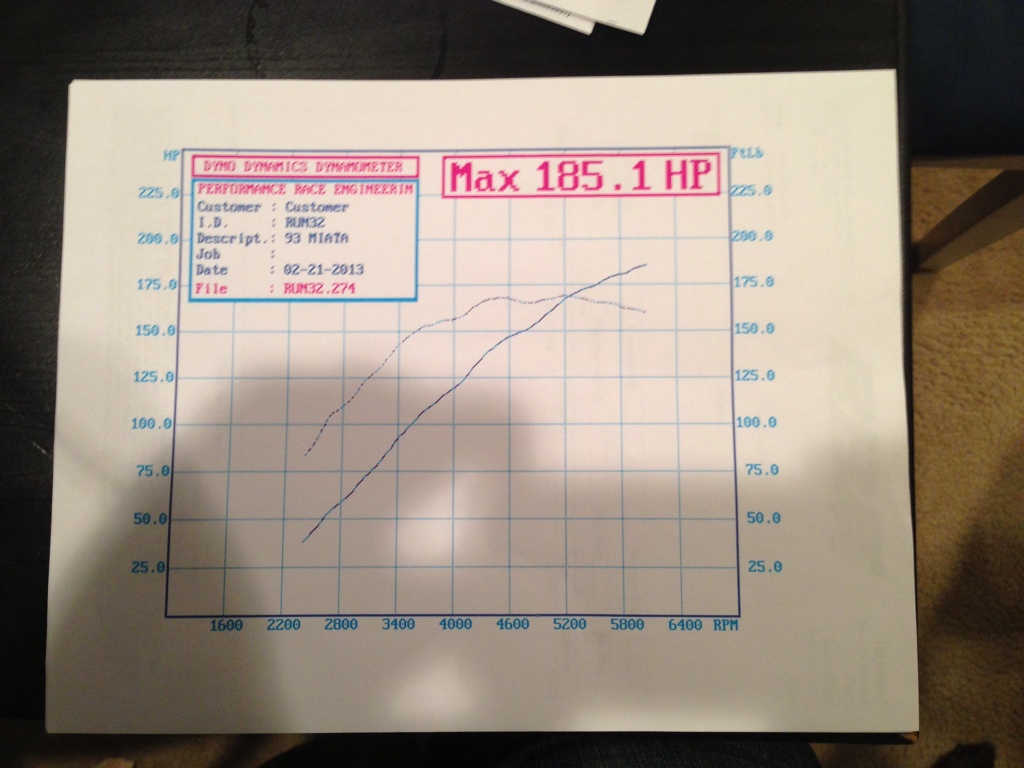
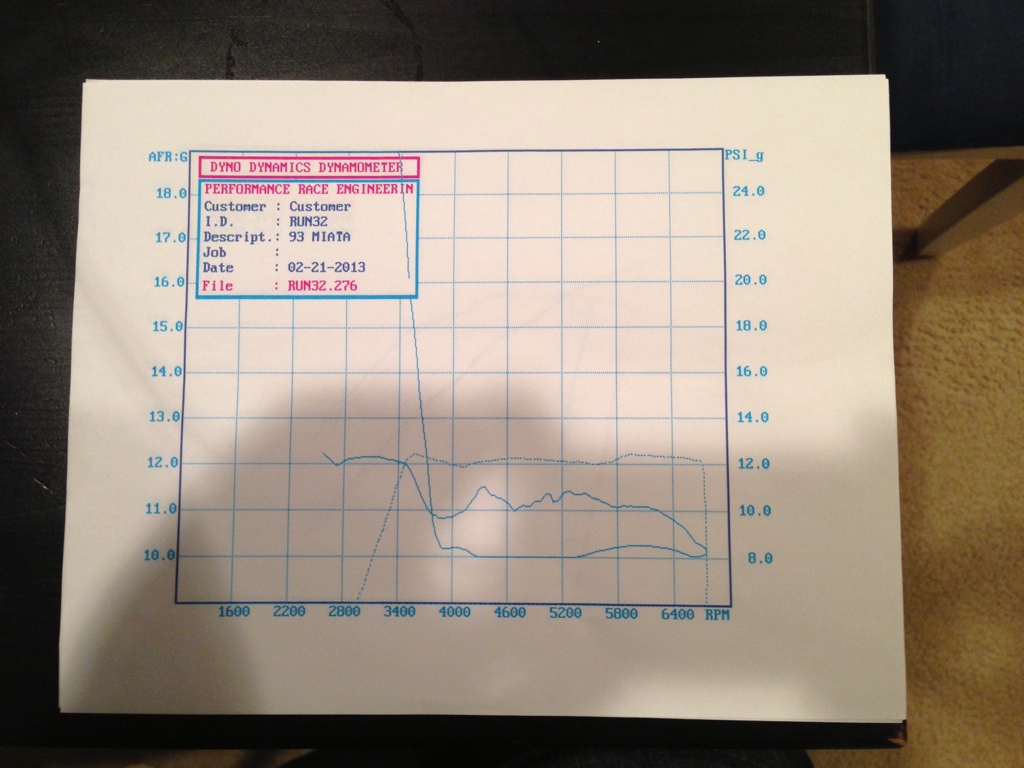
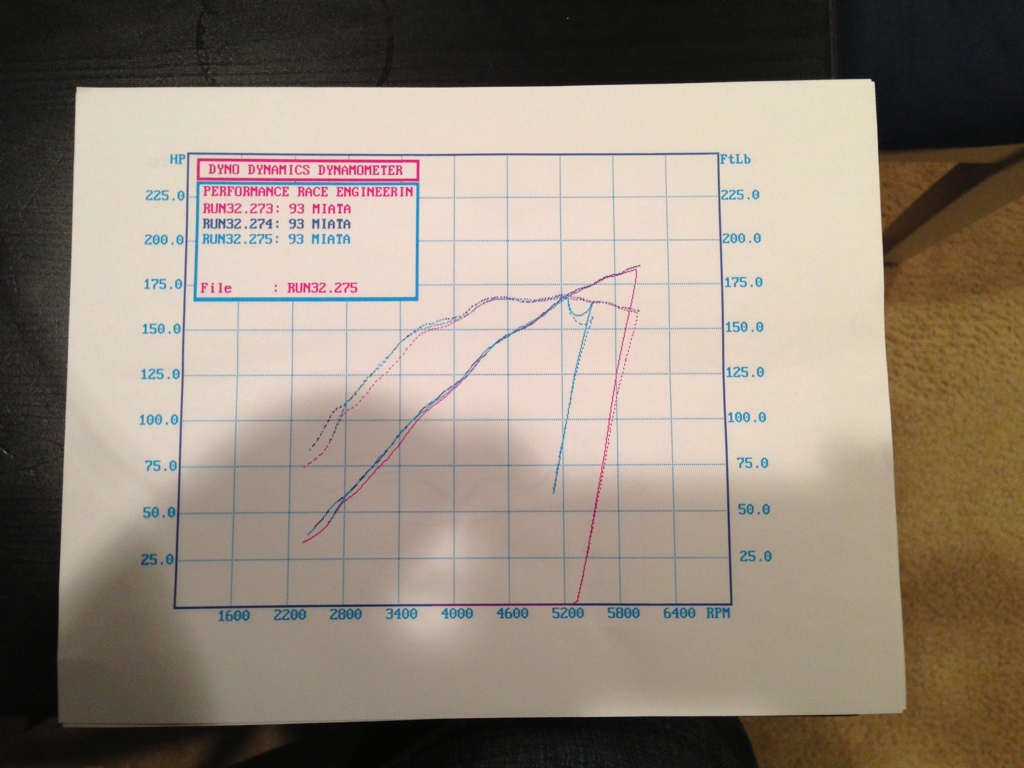
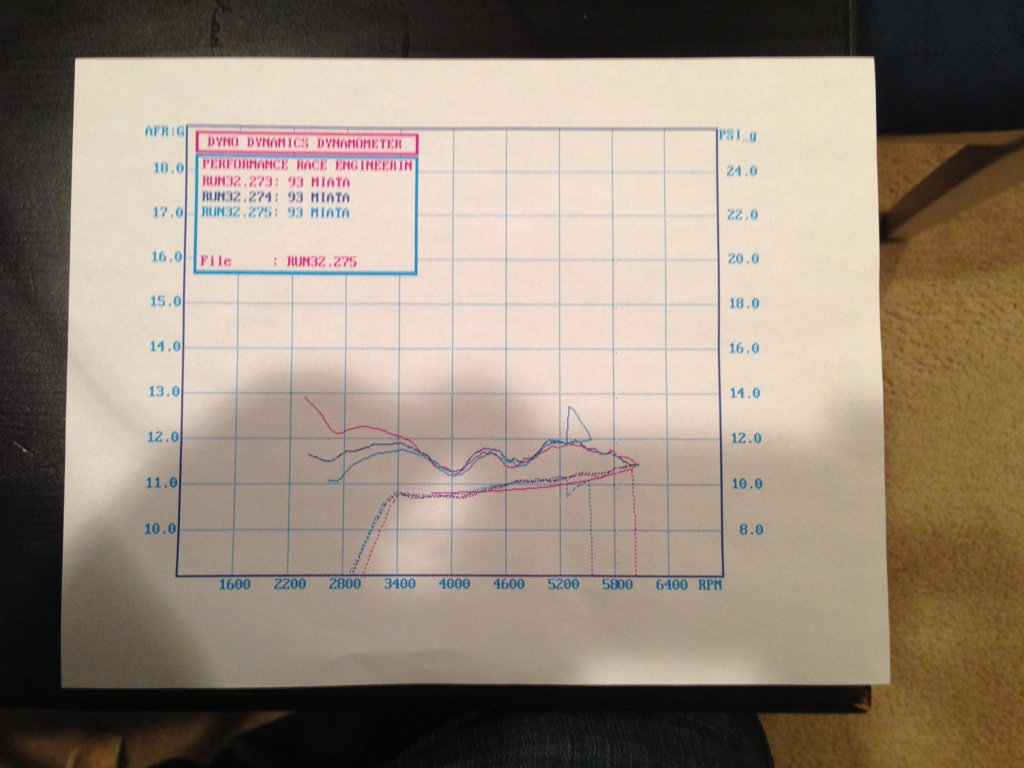
He literally did 3 runs, bam-bam-bam. I thought I'd have time for MBC adjustment. So I begged one more pull out of him and managed the 193hp@12psi. I would of loved a 14psi run as well to hit that magical 200. As you can see, the torque curve really liked 12psi. I gained 8hp and 11ft/lbs with 2 psi.
This was the "same" setup as the 155hp run, obviously on a different dyno. I've since ripped out my 2.5" cat and exhaust and replaced it with Abe's 3" exhaust, and had the valve seals replaced. A decent amount of tuning as well. Otherwise all on the same psi.

Bam:
Thank ya ma'am:

Made 185 on 10 psi, all the following graphs are for the 3 185hp runs:




He literally did 3 runs, bam-bam-bam. I thought I'd have time for MBC adjustment. So I begged one more pull out of him and managed the 193hp@12psi. I would of loved a 14psi run as well to hit that magical 200. As you can see, the torque curve really liked 12psi. I gained 8hp and 11ft/lbs with 2 psi.
This was the "same" setup as the 155hp run, obviously on a different dyno. I've since ripped out my 2.5" cat and exhaust and replaced it with Abe's 3" exhaust, and had the valve seals replaced. A decent amount of tuning as well. Otherwise all on the same psi.
#116
Thread Starter
Joined: Oct 2005
Posts: 14,497
Total Cats: 1,236
From: Oregon City, OR
My friend came too:
385hp, sounded absolutely amazing. Mine was like extremely hot air coming out of a straw at your face, and was bearable, noise wise. His was like a jet turbine, although slightly cooler, and the noise was orgasmically deafening.
385hp, sounded absolutely amazing. Mine was like extremely hot air coming out of a straw at your face, and was bearable, noise wise. His was like a jet turbine, although slightly cooler, and the noise was orgasmically deafening.














